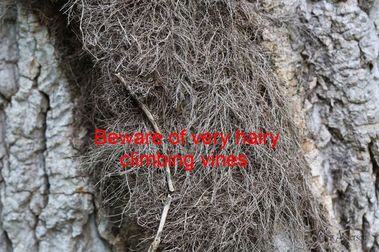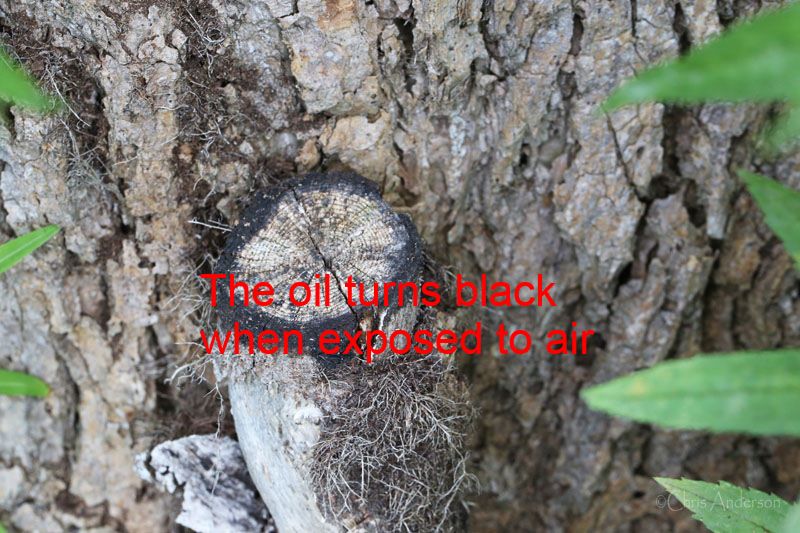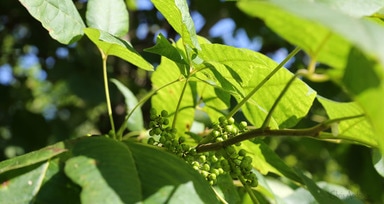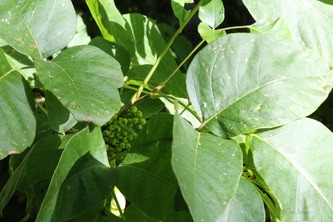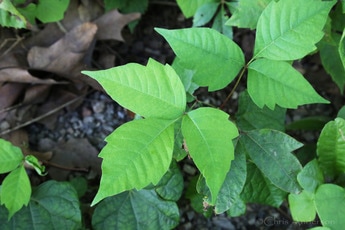 , My brother was sometimes mean to me. One summer afternoon when we were little kids, he suggested excitedly that we go pick Mom a 'bouquet'. He led me to a patch of lush green foliage and said that even though the plant didn't have blossoms, she would like a big vase of it. He directed me to grab several handfuls and we walked back to the house to present "our" lovely arrangement. The moment she saw me her expression turned to horror and, in two days, I was covered head to foot with a horrible, red rash that necessitated a trip to the doctor. I never had any trouble identifying poison ivy (Toxicodendron radicans) afterwards. I looked like an alien with pink blotches of Calamine lotion spread everywhere and even my blisters had blisters. Looking back on the poison ivy picking experience, it is one of those once-in-a-lifetime events, kind of like purposefully tearing up a one hundred dollar bill or walking into the animal shelter and declaring that you will adopt them all. However, even though the plant may not have leaves and be actively growing in the winter, it can be a problem as all parts of the plant contain urushiol, the oil that causes the contact dermatitis or skin reaction. For sensitive people, even rubbing a pet that has brushed against a vine can result in blisters or handling boots or clothes that came into contact with poison ivy the previous year - the oil can stay active for up to one year. Firewood should be inspected to make sure there are no vines attached since inhaling the smoke from burning poison ivy can be a serious health risk as the blisters may form inside the lungs. Poison ivy grows in a wide range and variety of habitats and can form either a bush , trailing or climbing vine. It is said that the juice from crushed leaves and stems of jewelweed (Impatiens biflora) can prevent or decrease the reaction and fortunately, the two plants often grow in close proximity to each other. It would have been nice if my early and severe introduction to poison ivy had imbued me with immunity for life but it did not and I had future doctor visits to address encounters - an expensive and time-consuming necessity. Some people (self included) swear by a natural homeopathic remedy called Rhus-Tox as both a treatment and a preventative for poison ivy; this is particularly good for those who work outside a lot and who frequently encounter the plant. Rhus-Tox can occasionally be found in local drugstores and apothecaries. 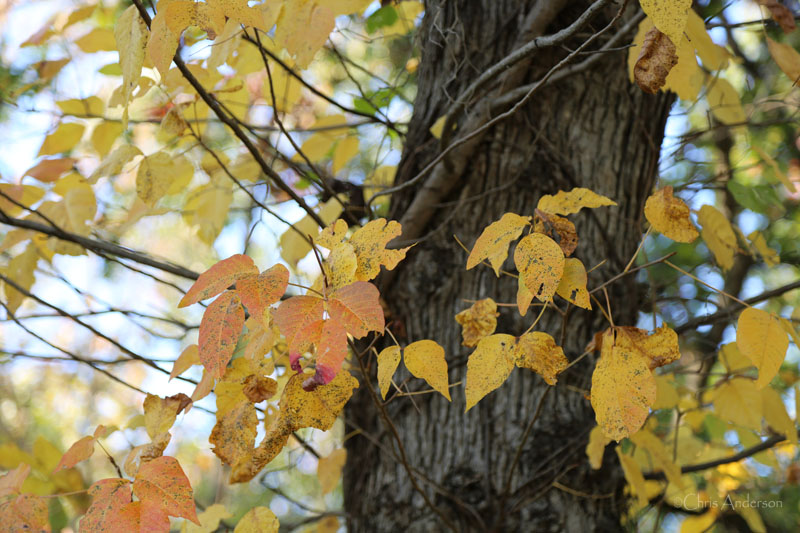 The oil is so potent that in 1748, Peter Kalm wrote that 'the letters and characters made upon linen with it cannot be removed, but grow blacker the more the cloth is washed'. (Source: Wildly Successful Plants, A Handbook of North American Weeds by Lawrence J. Crockett, Collier Books, NY, 1977, p. 61). However, as difficult as poison ivy is for some humans to deal with (about 15% of the population are not sensitive to the oil), it is native to North American and therefore has numerous ecological benefits; deer and other mammals eat the foliage with impunity and many bird species relish the berries that form in mid to late summer. There are a couple of look-alike plants which are also native to Virginia and which provide valuable habitat and food for wildlife : Virginia creeper and the boxelder tree. As with any control measure, making a positive id is crucial before treatment options are determined. One suggestion: if you are allergic to poison ivy, mechanical control with bare hands is not advised.
1 Comment
Peggy Kenney
2/5/2017 09:04:15 pm
Excellent posting! I have become very cautious when pulling invasive species as I've come down with poison ivy rash several times in the past two years as a Master Naturalist.
Reply
Your comment will be posted after it is approved.
Leave a Reply. |
Have a blog or blog idea?
Let us know (click) Other Blogs
VA Native Plant Society - click Brenda Clement Jones - click John Muir Laws' Blog - click Megan's Nature Nook - click Categories
All
Archives
September 2023
Blog Administrator:
Kathleen A. VMN since 2018 |
